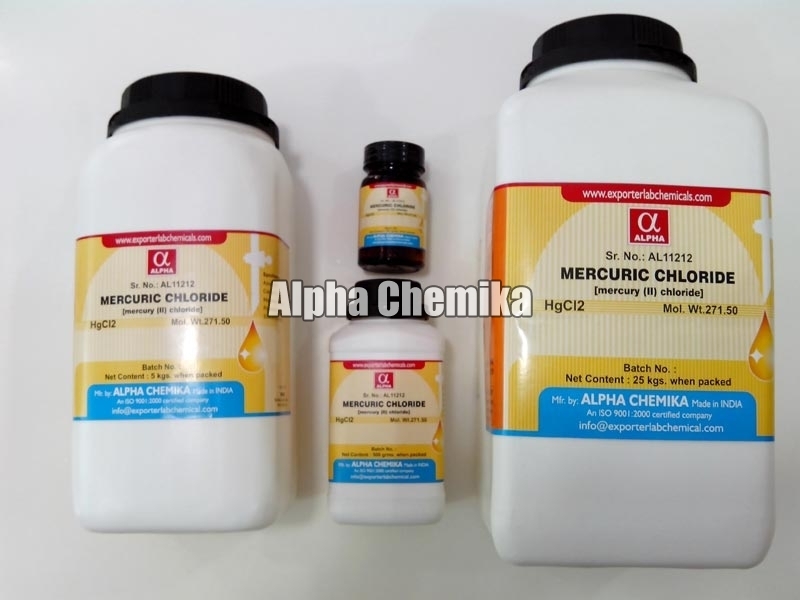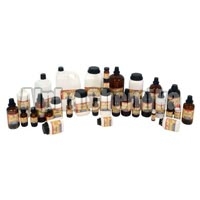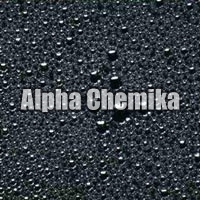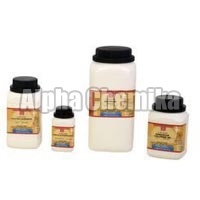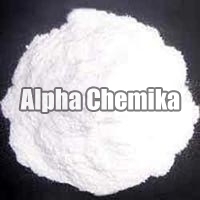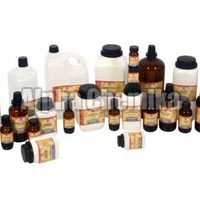-
exports@alphachemika.co.in -
View Mobile Number - Send SMS
- Send Email
- GST No. 27AAOFA9762F1Z1
| Business Type | Manufacturer, Exporter, Supplier, Retailer |
| Brand Name | ALPHA CHEMIKA |
| CAS No. | 7487-94-7 |
| Other Names | [mercury (II) chloride] |
| Click to view more | |
Product Details
Mercuric Chloride can be availed from us in the required quantity. Mercuric Chloride is a chemical compound of mercury and chlorine with formula HgCl2. The Mercuric Chloride is used in various R&D labs and educational institutions for performing necessary tests and reactions.
Product Identification
- Synonyms : Mercury bichloride; corrosive sublimate; mercury (II) chloride; mercury perchloride
- CAS No : 7487-94-7
- Molecular Weight : 271.52
- Chemical Formula : HgCl2
- Product Codes : AL2463
Composition/Information on Ingredients Ingredient
- Ingredient : Mercuric Chloride
- CAS No : 7487-94-7
- Percent : 98 - 100%
- Hazardous : Yes
SAF-T-DATA(tm) Ratings (Provided here for your convenience)
- Health Rating : 4 - Extreme (Poison)
- Flammability Rating : 0 - None
- Reactivity Rating : 2 - Moderate
- Contact Rating : 4 - Extreme (Life) Lab Protective Equip: GOGGLES & SHIELD; LAB COAT & APRON; VENT HOOD; PROPER GLOVES
- Storage Color Code : Blue (Health)
Potential Health Effects
- Inhalation :
Causes irritation to the respiratory tract. Symptoms include sore throat, coughing, pain, tightness in chest, breathing difficulties, shortness of breath and headache. Pneumonitis may develop. Can be absorbed through inhalation with symptoms to parallel ingestion. Vapor inhalation can burn the mucous membrane of the nose and throat. - Ingestion :
Highly Toxic! Average lethal dose for inorganic mercury salts is about 1 gram. May cause burning of the mouth and pharynx, abdominal pain, vomiting, corrosive ulceration, bloody diarrhea. May be followed by a rapid and weak pulse, shallow breathing, paleness, exhaustion, central nervous system problems, tremors and collapse. Delayed death may occur from renal failure. - Skin Contact :
Causes irritaton and burns to skin. Symptoms include redness and pain. May cause skin allergy and sensitization. Can be absorbed through the skin with symptoms to parallel ingestion. - Eye Contact :
Causes irritation and burns to eyes. Symptoms include redness, pain, blurred vision; may cause serious and permanent eye damage. - Chronic Exposure :
Chronic exposure through any route can produce central nervous system damage. May cause muscle tremors, personality and behavior changes, memory loss, metallic taste, loosening of the teeth, digestive disorders, skin rashes, brain damage and kidney damage. Can cause skin allergies and accumulate in the body. Repeated skin contact can cause the skin to turn gray in color. Teratogen: can damage the developing fetus and decrease fertility in males and females. - Aggravation of Pre-existing Conditions :
Persons with nervous disorders, or impaired kidney or respiratory function, or a history of allergies or a known sensitization to mercury may be more susceptible to the effects of the substance.
First Aid Measures
- Inhalation :
Remove to fresh air. If not breathing, give artificial respiration. If breathing is difficult, give oxygen. Get medical attention immediately. - Ingestion :
Induce vomiting immediately as directed by medical personnel. Never give anything by mouth to an unconscious person. Get medical attention immediately. - Skin Contact :
Immediately flush skin with plenty of water for at least 15 minutes while removing contaminated clothing and shoes. Get medical attention immediately. Wash clothing before reuse. Thoroughly clean shoes before reuse. - Eye Contact :
Immediately flush eyes with plenty of water for at least 15 minutes, lifting lower and upper eyelids occasionally. Get medical attention immediately.
Fire Fighting Measures
- Fire :
Not considered to be a fire hazard. - Explosion :
Explosive conditions are created by friction, heat, or impact with phosphorus, antimony, arsenic, silver salts, sulfides, acetylene, ammonia and oxalic acid. - Fire Extinguishing Media :
Water, dry chemical, foam or carbon dioxide. Do not use a solid stream of water, since the stream will scatter and spread the fire. Do not allow water runoff to enter sewers or waterways. - Special Information :
In the event of a fire, wear full protective clothing and NIOSH-approved self-contained breathing apparatus with full facepiece operated in the pressure demand or other positive pressure mode. .
Accidental Release Measures
Ventilate area of leak or spill. Clean-up personnel require protective clothing and respiratory protection from dust.
Spills : Pick up and place in a suitable container for reclamation or disposal in a method that does not generate dust. Sprinkle area with sulfur or calcium polysulfide to suppress mercury. US Regulations (CERCLA) require reporting spills and releases to soil, water and air in excess of reportable quantities. The toll free number for the US Coast Guard National Response Center is (800) 424-8802.
Handling and Storage
Keep in a tightly closed container, stored in a cool, dry, ventilated area. Protect from physical damage and direct sunlight. Isolate from incompatible substances. Follow strict hygiene practices. Containers of this material may be hazardous when empty since they retain product residues (dust, solids); observe all warnings and precautions listed for the product.
Exposure Controls/Personal Protection
- Airborne Exposure Limits :
- OSHA Acceptable Ceiling Concentration :
mercury and mercury compounds : 0.1 mg/m3 (TWA), skin
- ACGIH Threshold Limit Value (TLV) :
inorganic and metallic mercury, as Hg : 0.025 mg/m3 (TWA) skin, A4 Not classifiable as a human carcinogen.
- ACGIH Biological Exposure Indices :
total inorganic mercury in urine (preshift) : 35 ug/g creatinine;
total inorganic mercury in blood (end of shift) : 15 ug/l. - Ventilation System :
A system of local and/or general exhaust is recommended to keep employee exposures below the Airborne Exposure Limits. Local exhaust ventilation is generally preferred because it can control the emissions of the contaminant at its source, preventing dispersion of it into the general work area. Please refer to the ACGIH document, Industrial Ventilation, A Manual of Recommended Practices, most recent edition, for details. - Personal Respirators (NIOSH Approved) :
If the exposure limit is exceeded and engineering controls are not feasible, a full facepiece particulate respirator (NIOSH type N100 filters) may be worn for up to 50 times the exposure limit or the maximum use concentration specified by the appropriate regulatory agency or respirator supplier, whichever is lowest. If oil particles (e.g. lubricants, cutting fluids. glycerine, etc.) are present, use a NIOSH type R or P filter. For emergencies or instances where the exposure levels are not known, use a full-facepiece positive-pressure, air-supplied respirator. WARNING: Air-purifying respirators do not protect workers in oxygen-deficient atmospheres. - Skin Protection :
Wear impervious protective clothing, including boots, gloves, lab coat, apron or coveralls, as appropriate, to prevent skin contact. - Eye Protection :
Use chemical safety goggles and/or full face shield where dusting or splashing of solutions is possible. Maintain eye wash fountain and quick-drench facilities in work area. - Physical and Chemical Properties Appearance :
White crystals or powder.
Odor':
Odorless.
Solubility:
7.4g in 100g of water.
Specific Gravity:
5.4
pH:
3.2 (0.2 M solution)
% Volatiles by volume @ 21C (70F):
0
Boiling Point:
302C (576F) Sublimes.
Melting Point:
276C (529F) Sublimes.
Vapor Density (Air=1):
8.7
Vapor Pressure (mm Hg):
1 @ 136.2C (277F)
Evaporation Rate (BuAc=1):
No information found.
Stability and Reactivity
- Stability :
Stable under ordinary conditions of use and storage. Slowly decomposes to metallic Hg in the presence of organic matter and sunlight, and becomes volatile at 300C (572F). - Hazardous Decomposition Products :
Oxides of the contained metal and halogen, possibly also free, or ionic halogen. - Hazardous Polymerization :
Will not occur. - Incompatibilities :
Reacts violently with potassium and sodium. Incompatible with many compounds: formates, sulfites, phosphates, albumin, ammonia, gelatin, carbonates, hypophosphites, sulfides, alkalis, alkaloid salts, lime water, antimony and arsenic, bromides, borax, reduced iron, copper, iron, lead, tannic acid and vegetable astringents. - Conditions to Avoid :
Heat, shock, friction, incompatibles.
Certificate of Analysis of Mercuric Chloride 98 %
|
Tests |
Specifications |
Results |
|
Description |
White crystalline powder |
White crystalline powder |
|
Assay (Min.) |
98.0% |
99.73% |
|
Calcium (Ca) |
<0.005% |
0.0006% |
|
Magnesium (Mg) |
<0.005% |
0.0006% |
|
Potassium (K) |
<0.005% |
<0.005% |
|
Sodium (Na) |
<0.005% |
<0.005% |
Details :
- Product Name : MERCURIC CHLORIDE 98%
- Molecular Formula : HgCl2
- Weight : 271.50
- Art NO : AL2460
- Batch No : AL2460 - MERC
- Shelf life : 5 years
Results : The above product complies with LR grade
Certificate of Analysis of Mercuric Chloride Ar 99.5 %
| Tests | Specifications | Results |
| Description | White crystalline powder | White crystalline powder |
| Assay (Min.) | 99.5% | 99.73% |
| Ether insoluble matter | <0.01% | 0.008% |
| Water insoluble matter | <0.01% | 0.006% |
| Non-volatile matter | <0.02% | 0.01% |
| Residue after reduction with formic acid | <0.02% | 0.01% |
| Nitrate (NO3) | <0.001% | 0.0008% |
| Calcium (Ca) | <0.001% | 0.0006% |
| Copper (Cu) | <0.0005% | <0.0005% |
| Iron (Fe) | <0.001% | 0.0006% |
| Lead (Pb) | <0.0005% | <0.0005% |
| Magnesium (Mg) | <0.001% | 0.0006% |
| Potassium (K) | <0.005% | <0.005% |
| Sodium (Na) | <0.005% | <0.005% |
Details :
- Product Name : MERCURIC CHLORIDE AR 99.5%
- Molecular Formula : HgCl2
- Weight : 271.50
- Art NO : AL2463
- Batch No : AL2463 - MERC
Results : The above product complies with AR grade
Toxicological Information
- Toxicological Data : Oral rat LD50 : 1 mg/kg. Irritation, Standard Draize, rabbit : Skin, 500 mg/24H, severe; Eye, 50 ug/24H, severe. Investigated as a tumorigen, mutagen, reproductive effector.
- Reproductive Toxicity : All forms of mercury can cross the placenta to the fetus, but most of what is known has been learned from experimental animals. See Chronic Health Hazards.
- Carcinogenicity : EPA / IRIS classification: Group C - Possible human carcinogen.
NTP Carcinogen
| Ingredient |
Know |
Anticipated |
IARC Category |
|
Mercuric Chloride (7487-94-7) |
No | No | 3 |
Ecological Information
- Environmental Fate :
For mercury: This material has an experimentally-determined bioconcentration factor (BCF) of greater than 100. This material is expected to significantly bioaccumulate
- Environmental Toxicity :
24 Hr LC50 rainbow trout (juvenile): 0.903 mg/L; 48 Hr LC50 fathead minnow: 0.037 mg/L; 96 Hr LC50 bluegill sunfish (size 0.6 g): 0.16 mg/L (static) Dangerous to the environment. Very toxic to aquatic organisms; may cause long term adverse effects in the aquatic environment
Disposal Considerations
Whatever cannot be saved for recovery or recycling should be handled as hazardous waste and sent to a RCRA approved waste facility. Processing, use or contamination of this product may change the waste management options. State and local disposal regulations may differ from federal disposal regulations. Dispose of container and unused contents in accordance with federal, state and local requirements.
Transport Information
- Domestic (Land, D.O.T.)
Proper Shipping Name : MERCURIC CHLORIDE Hazard Class : 6.1 UN/NA : UN1624 Packing Group : II Information reported for product/size : 2.5KG
- International (Water, I.M.O.)
Proper Shipping Name : MERCURIC CHLORIDE Hazard Class : 6.1 UN/NA : UN1624 Packing Group : II Information reported for product/size : 2.5KG
- International (Air, I.C.A.O.)
Proper Shipping Name : MERCURIC CHLORIDE Hazard Class : 6.1 UN/NA : UN1624 Packing Group : II Information reported for product/size : 2.5KG
Regulatory Information
- Chemical Inventory Status - Part 1
| Ingredien | TSCA | EC | Japan | Australia |
| Mercuric Chloride (7487-94-7) | Yes | Yes | Yes | Yes |
- Chemical Inventory Status - Part 2
| Canada | ||||
| Ingredien | Korea | DSL | NDSL | Phil |
| Mercuric Chloride (7487-94-7) | Yes | Yes | No | Yes |
- Federal, State & International Regulations - Part 1
| ---SARA 302---------SARA 313--- | ||||
| Ingredien | RQ | TPQ | List | Chemical Catg |
| Mercuric Chloride (7487-94-7) | 500 | 500* | No | Mercury comp |
- Federal, State & International Regulations - Part 2
|
----RCRA--TSCA3-- |
||||
| Ingredien | CERCLA | 261.33 | 8(d)Chemical Catg | |
| Mercuric Chloride (7487-94-7) |
1 |
No | No | |
- Chemical Weapons Convention : No
- TSCA 12(b) : No CDTA: No
- SARA 311/312 : Acute: Yes
- Chronic : Yes
- Fire : No
- Pressure : No
- Reactivity : No (Pure / Solid)
- WARNING : This Product Contains a Chemical(s) Known to the State of California to Cause Birth Defects or other Reproductive Harm.
Australian Hazchem Code : 2X
Poison Schedule : S7
WHMIS : This MSDS has been prepared according to the hazard criteria of the Controlled Products Regulations (CPR) and the MSDS contains all of the information required by the CPR.
Other Information
NFPA Ratings: Health : 3 Flammability: 0 Reactivity: 0 Label Hazard Warning : Danger! May Be Fatal if Swallowed. Harmful if Inhaled or Absorbed Through Skin. Causes Severe Irritation to Eyes, Skin and Respiratory Tract; May Cause Burns. May Cause Allergic Skin Reaction. Mercury Compounds Affect the Kidneys and Central Nervous System. Birth Defect Hazard. Can Cause Birth Defects.
Label Precautions : Do not breathe dust. Keep container closed. Use only with adequate ventilation. Wash thoroughly after handling. Do not get in eyes, on skin, or on clothing.
Label First Aid :
If swallowed, induce vomiting immediately as directed by medical personnel. Never give anything by mouth to an unconscious person. If inhaled, remove to fresh air. If not breathing, give artificial respiration. If breathing is difficult, give oxygen. In case of contact, immediately flush eyes or skin with plenty of water for at least 15 minutes while removing contaminated clothing and shoes. Wash clothing before reuse. In all cases get medical attention immediately.
Product Use : Laboratory Reagent. Revision Information : No Changes.
Note :
Prepared by : Environmental Health & Safety
Phone Number : (314) 654-1600 (U.S.A.)
